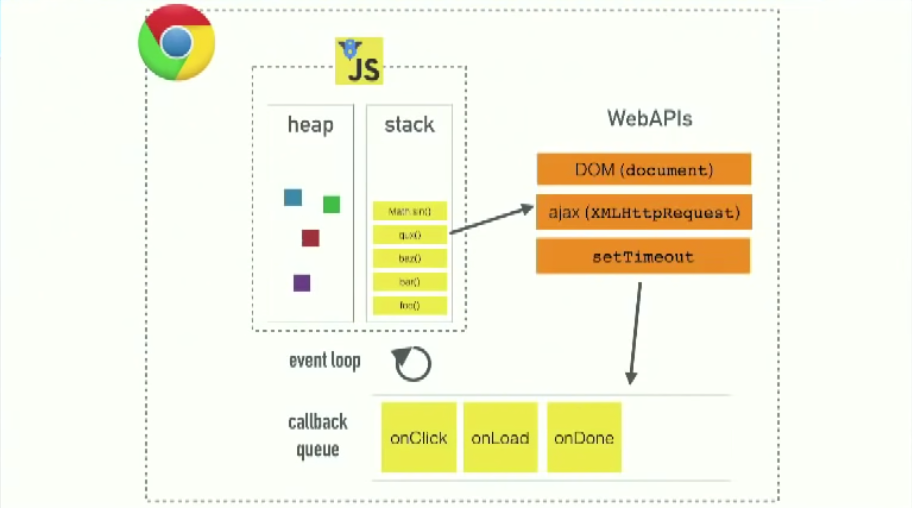What is the Event Loop?
Jan 18, 2022
You may have heard that JavaScript is a “single threaded” language, which is true (well technically it’s the JS engine that is single-threaded, not the language itself - but that's not important for our purposes). More specifically, this means that the JavaScript engine has only one call stack and therefore can only execute and compile one thing at a time.
Let's first answer the obvious question - what’s a call stack?
In simple terms, the call stack keeps track of function calls. When a function is called, it’s pushed onto the stack. When it completes, it’s popped off the stack.
Okay, so if the JS engine can only handle one thing at a time, what happens if that thing is slow or “blocking” or just never completes - like an API call, for example.
Luckily, the browser is more than just a runtime. It also provides a number of handy Web APIs that allow us to boot things off the stack so that the rest of our code can continue executing.
Okay, back to Web APIs. Let’s look at one of the most common ones - setTimeout().
Consider the following code. What will the console logs look like?
console.log('hi');
setTimeout(() => console.log('everyone'), 5000);
console.log('there');Chances are you know the answer is:
But what’s actually happening?
Well, we’re harnessing the power of asynchronous callbacks! Essentially, the function we passed to setTimeout() kicks off a 5 seconds timer in the browser, allowing the call to setTimeout() to be removed from the stack because it’s done its job. Without asynchronous callbacks, the execution of our code would pause for 5 seconds and our site would be completely unresponsive.
Now, what happens when that timer goes off? This is where things get interesting.
You might think (as I first did) that the callback function immediately gets pushed onto the stack and executed. The problem with that is there may be other code still running and we certainly don’t want these Web APIs randomly pushing code onto the stack. Instead, this is where the task queue (or callback queue) comes in.
Once that timer completes, the callback gets moved to the task queue. If the stack is clear (i.e. no code is currently executing), the callback will be immediately pushed onto the stack. However, if the stack is not empty, the callback function simply hangs out in the queue until it is.
In our example, this means the callback we passed to setTimeout() is not guaranteed to execute after exactly 5 seconds because if the call stack is busy, it will remain in the event queue. As such, 5 seconds is simply the minimum amount of time before executing. Knowing this, can you intuit the purpose of a setTimeout() with a duration of 0? That’s right, it simply defers execution of the callback until the stack is clear.
So, after all that rambling, I still haven’t answered the title question - what is the event loop? Well, it’s simply the mechanism that continuously checks for an empty call stack and then pushes any items in the callback queue onto it. That’s it.
Here’s some pseudo code to drive it home:
// Event Loop
while isNotEmpty(eventQueue) {
if (callStackIsEmpty) {
pull out first item from event queue
push onto stack
follow the execution logic until call stack is empty
}
}If you want to learn even more, check out this incredible talk. I've watched it multiple times and I still somehow learn something new each time.
I'll leave you with an image I pulled from that talk which nicely sums up everything we just discussed:
